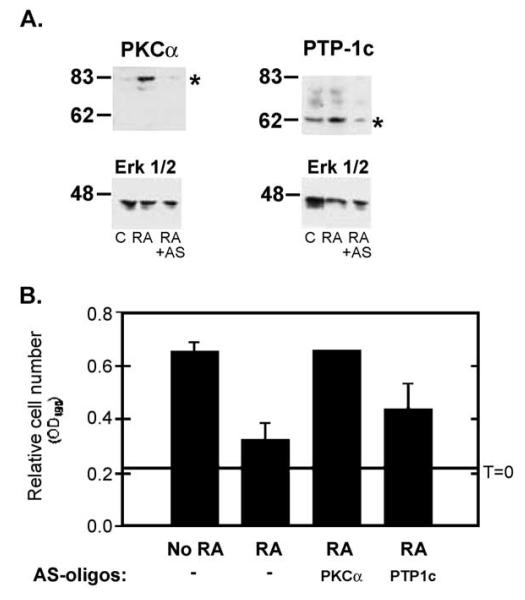Fig. 6.
Phosphotyrosine phosphatase 1C is implicated in mediating retinoid effects on EGF signaling. (A) T-47D cells were grown in the presence of 10−7 M RA, or 10−7 M RA and 10 μM anti-sense oligonucleotides directed at PKCα or PTP-1C. After 3 days, whole cell lysates were resolved by SDS-PAGE and PKCα (top left), PTP-1c (top right) and Erk 1/2 levels were measured by immunoblotting (following stripping and reprobing of the same filters shown in the top panels). Exposure to anti-sense oligonucleotides prevented the RA-induced increase in PKCα (left) and PTP-1c expression without affecting Erk 1/2 levels. (B) T-47D cells were grown in the presence of 10−6 M RA, or 10−6 M RA and 10 μM anti-sense oligonucleotides directed at PKCα or PTP-1C. After 3 and 5 days (day 5 data shown) relative cell numbers were determined using MTS (OD490 ± SEM). Anti-sense oligonucleotides targeting PKCα prevented retinoid-induced growth arrest. Anti-sense oligonucleotides targeting PTP-1C resulted in a partial block to retinoid-induced growth arrest. Sequence mismatch oligonucleotides did not affect retinoid action and neither mismatch nor anti-sense oligonucleotides affected T-47D proliferation in the absence of retinoids (not shown).

